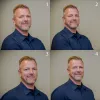Hello Everyone,
I'm working with UL to deal with fraudulent Greenguard certificates. I often reserach products on their UL Spot database and when I cannot find a certificate, I ask the manufacturer for their general emissions certificate, expecting a certificate from a different certifying body. There have been two instances where a manufacturer sends me a Greenguard certificate which takes me by surprise because I have already searched for it. I then search for it again, with certificate in hand, and cannot find it. I send the certificate to UL to verify if it is valid since it's not in their database, it turned out it's not legitimate. The only reason I checked the certificate once I received it is to check if I'm crazy because I couldn't find it the first time.
In both cases, it was for fabric used in widow shades, two different manufacturers, two completely unrelated cases. This is what's happening: fabric manufacturer gets fabric A certified, shade manufacturer buys fabric A and markets it as fabric B when they sell window shades. My solution to this is to have the shade manufacturer provide a letter stating the name of the fabric A and the name of fabric B under which they market it. I submit this letter along with the original, legitimate certificate. UL agrees this is an acceptable solution.
All this to say, if for some reason you are in this situation, please contact UL to verify the certificate if you feel something is off. UL needs to ensure the integrity of their certification system is maintained.
LEED documentation is onerous enough, no one needs to deal with fraud on top of it!





